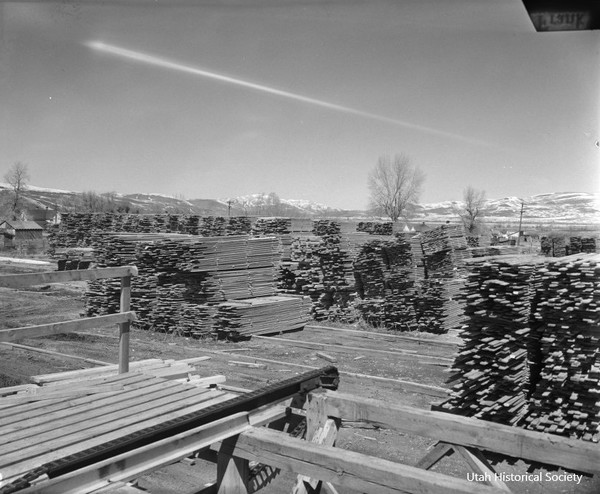Dublin Core
Title
Description
Located in Utah's Summit County, roughly 50 miles east of Salt Lake City, the small town of Kamas was settled in 1857 in a picturesque valley flush with natural resources. Abundant forests of pine and spruce attracted the timber industry, which quickly took hold. Despite its rural setting, Kamas was not isolated from the pressures of nearby urban markets, nor from federal policies governing the public commons. In fact, local industries and livelihoods of rural Kamas depended heavily on demand from neighboring cities.
When the first sawmill in Kamas was built in 1860, men would cut and haul logs to Salt Lake City to sell or trade for supplies. Although the four day journey is long by today’s standards, it was then considered a relatively short and easy distance. Congress supported the growing lumber industry, enacting the Timber Culture Act of 1873, which encouraged the economic development of federal lands. As a result, millions of trees were cut throughout the West. Within a year of that legislation, Summit County had seven operational sawmills. Within a few decades, thousands of acres had been stripped to supply the growing demand for timber in Park City and the Salt Lake Valley.
But the unregulated use of public lands soon spurred another change at the federal level. In 1891, President Grover Cleveland designated some federal holdings as forest reserves, which regulated how the land could be used. Thousands of acres were added to the Uinta Forest Reserve near Kamas, although the lumber industry maintained a strong presence due to continued demand from Salt Lake and Utah Valleys. In 1955, Kamas was considered one of the largest logging centers in the state, supplying the markets for all neighboring counties.
As federal policy and attitudes toward public land use continued to change, so did the economy of Kamas. In the 1970s, Forest Service management of their districts elevated recreational uses of the forest to an equal footing with logging and grazing. As timber sales declined, Summit County became a recreational haven. Today, the Kamas economy is still tied to demand from its neighbors -- but this time as a tourist destination.
Creator
Source
_______________
See David Hampshire, Martha Sonntag Bradley, Allen Roberts, A History of Summit County, Utah State Historical Society Summit County Commission, 1998; Martha Sonntag Bradley, “Kamas,” Utah History Encyclopedia; “Peoa and Kamas,” Summit County, Utah official site; ElRoy Nelson, “Utah’s Forest Products,” Utah’s Economic Patterns, University of Utah Press, 1956; American Institute of Architects, “A Community Vision for Kamas,” Kamas, Utah Regional and Urban Design Assistance Team Report, 2019; “Utah Forests Producing New Boom in Lumber,” Salt Lake Tribune, April 17, 1955.

